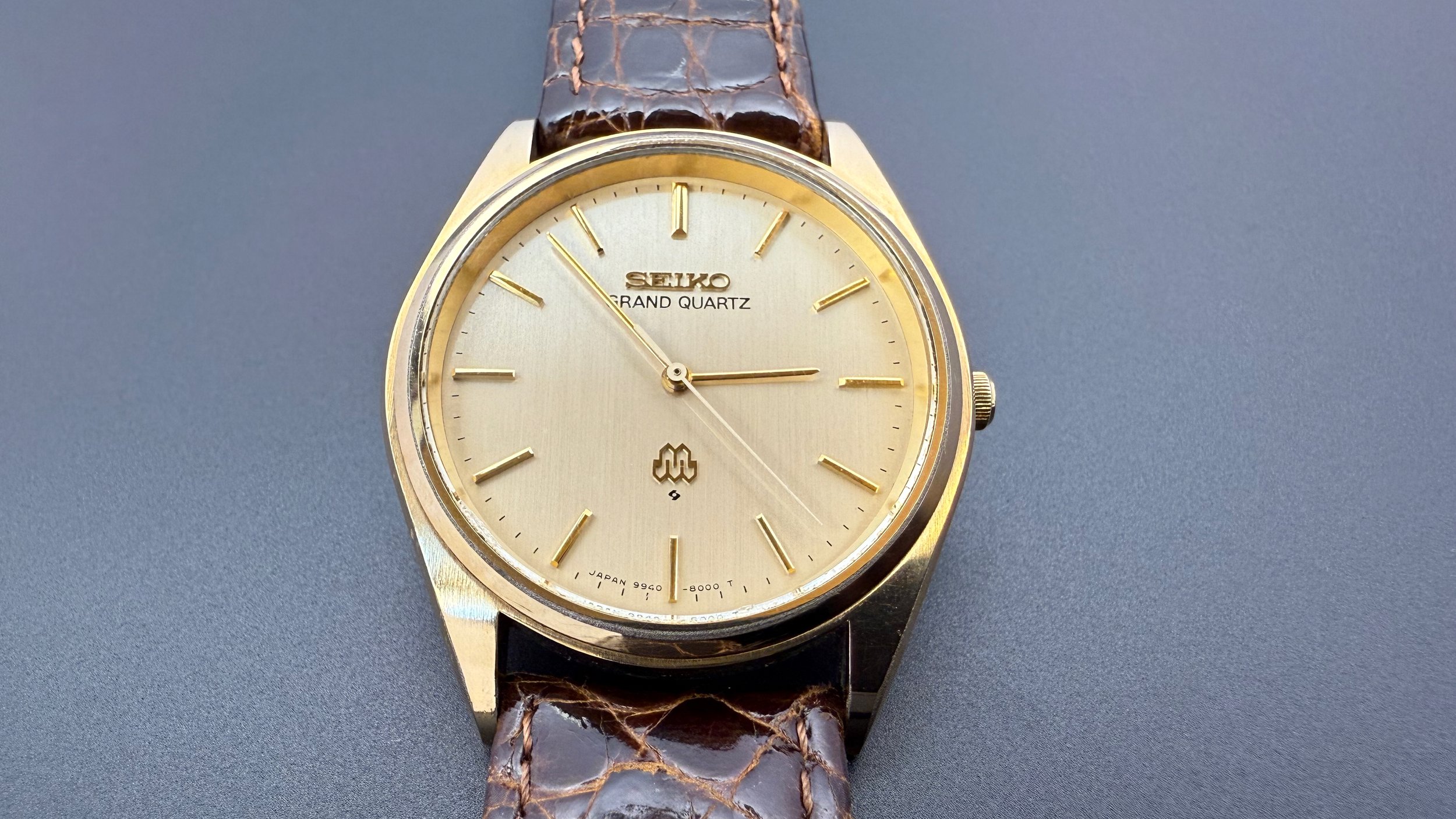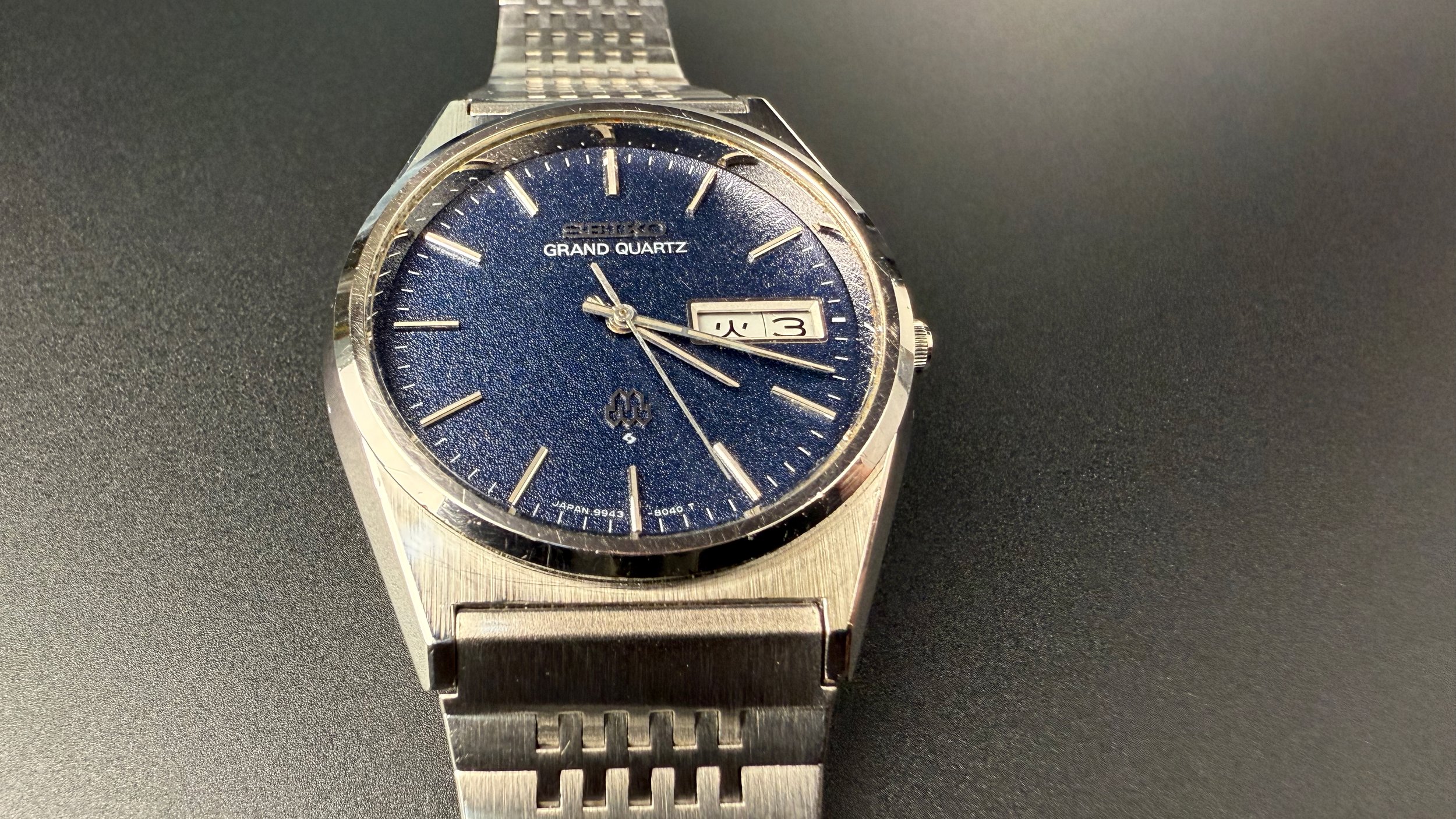
Twin Quartz Craze
When quartz was well established, at the end of the Seventies, the Seiko 1978 JDM catalogue showed the twin quartz caliber for the first time, however there were (eventually) at least three different design technologies behind the Seiko twin quartz models.
While quartz based watches are extremely accurate compared to mechanical watches, they are still not perfect. One of the main reasons for the inaccuracy in a quartz model is because as the temperature changes the oscillation of the quartz crystal varies slightly. This change in oscillation will cause the slight drift in timing. To compensate for these changes quartz watches will employ some kind of temperature compensation to maintain a steady oscillation.
Seikos with the two oscillators are very interesting watches. Very accurate as you might expect from two time sources (crystals) and thermocompensation. In this small and rather inexpensive group of high end quartz models the oldest (probably before 1978) thermocompensation method is the one present in the King Quartz caliber - the method is based on having two quartz crystals both around 32 kHz and using the difference from them as a way to indirectly measure temperature - and from that the number of quartz ticks that need to be skipped in order to achieve a better accuracy
The five calibers
In all five different calibre series were introduced in less than two and a half years, they were used in the Superior, Grand, King and Quartz line ups. The 99 series was first released in August 1978 (specifically the 9983A), the 92 series released in December 1978, closely followed by the 97 series released in October 1979 (9722A, 9723A). Just under a year later the 96 series was released in September 1980 as caliber 9641A and 9642, the latter in the inconspicuous Seiko Quartz - a true wolf in sheep’s clothes. Hot on its heels was the 94 series released in November of 1980 (9441A).
9923
The 9923 was a bit of an odd caliber for the King Quartz, as the base caliber 99 was represented in the Grand Quartz 9940 and in the Superior line 9980/83. On a more general note, Seiko more often than not delivered a surprise caliber that was used in multiple watches. It is hard to tell in which way the base caliber was changed apart from accuracy indications.
Back to base caliber 99. It is probable that the entire production of the Grand/King Quartz line spans a decade, 1975-1985. For caliber 99 however just 6 years. All of these watches have the strong lines and angles typical of the Seiko productions of the Seventies. The dial has the indices and the Seiko logo both applied and at six o'clock there is the "double honeycomb" logo, indicating the presence of a "twin quartz" caliber inside.

Contact us for bank transfer if you do not have Apple Pay or credit card.
The Twin Quartz Revolution
By the late 1970s, quartz technology had become a hallmark of precision, and Seiko was leading the charge. The 1978 Seiko JDM catalogue marked the debut of the twin quartz caliber, a groundbreaking innovation that addressed one of quartz’s remaining challenges: temperature-induced timing drift. Over time, Seiko developed at least three distinct design approaches to implement twin quartz technology across their lineup.
Quartz watches are inherently more accurate than mechanical ones, but even they are not immune to inaccuracies. Temperature changes subtly alter the oscillation frequency of the quartz crystal, causing slight timing deviations. To combat this, Seiko’s twin quartz models employed temperature compensation, stabilizing the oscillation for improved accuracy.
Among these, the King Quartz models with dual oscillators stand out as remarkable pieces. These watches leveraged two quartz crystals, both oscillating around 32 kHz, to indirectly measure temperature changes. By analyzing the difference in their oscillations, the movement could determine how many ticks to skip or adjust, achieving superior precision.
Five Key Twin Quartz Calibers
Between 1978 and 1980, Seiko introduced five distinct twin quartz calibers, spanning the Superior, Grand Quartz, King Quartz, and Quartz lines:
99 Series: Released in August 1978, starting with the 9983A, this series powered models like the Grand Quartz 9940 and Superior 9980/83.
92 Series: Arrived in December 1978.
97 Series: Debuted in October 1979, featuring the 9722A and 9723A.
96 Series: Released in September 1980, including the 9641A and 9642. The latter appeared in a modest Seiko Quartz model—a true “wolf in sheep’s clothing.”
94 Series: Introduced in November 1980 with the 9441A caliber.
The Unusual 9923 Caliber
The 9923 caliber was an anomaly within the King Quartz line, as it stemmed from the 99 series, which was more commonly seen in Grand Quartz and Superior models. It’s challenging to pinpoint how the base caliber was altered, apart from changes in accuracy ratings.
The Legacy of the 99 Series
The 99 series calibers likely saw a six-year production run, from 1978 to 1984, within the broader 1975–1985 Grand and King Quartz lineup. These watches embodied the bold, angular design language of 1970s Seiko. Their dials featured applied indices and the Seiko logo, while the “double honeycomb” logo at six o’clock signified the presence of twin quartz technology.
Seiko’s twin quartz calibers remain a testament to the brand’s innovative spirit, demonstrating how precision engineering and elegant design can converge to create watches that are as technically advanced as they are timeless.


Contact us for bank transfer if you do not have Apple Pay or credit card.
Twin Quartz Craze
When quartz was well established, at the end of the Seventies, the Seiko 1978 JDM catalogue showed the twin quartz caliber for the first time, however there were (eventually) at least three different design technologies behind the Seiko twin quartz models.
While quartz based watches are extremely accurate compared to mechanical watches, they are still not perfect. One of the main reasons for the inaccuracy in a quartz model is because as the temperature changes the oscillation of the quartz crystal varies slightly. This change in oscillation will cause the slight drift in timing. To compensate for these changes quartz watches will employ some kind of temperature compensation to maintain a steady oscillation.
Seikos with the two oscillators are very interesting watches. Very accurate as you might expect from two time sources (crystals) and thermocompensation. In this small and rather inexpensive group of high end quartz models the oldest (probably before 1978) thermocompensation method is the one present in the King Quartz caliber - the method is based on having two quartz crystals both around 32 kHz and using the difference from them as a way to indirectly measure temperature - and from that the number of quartz ticks that need to be skipped in order to achieve a better accuracy
The five calibers
In all five different calibre series were introduced in less than two and a half years, they were used in the Superior, Grand, King and Quartz line ups. The 99 series was first released in August 1978 (specifically the 9983A), the 92 series released in December 1978, closely followed by the 97 series released in October 1979 (9722A, 9723A). Just under a year later the 96 series was released in September 1980 as caliber 9641A and 9642, the latter in the inconspicuous Seiko Quartz - a true wolf in sheep’s clothes. Hot on its heels was the 94 series released in November of 1980 (9441A).
9923
The 9923 was a bit of an odd caliber for the King Quartz, as the base caliber 99 was represented in the Grand Quartz 9940 and in the Superior line 9980/83. On a more general note, Seiko more often than not delivered a surprise caliber that was used in multiple watches. It is hard to tell in which way the base caliber was changed apart from accuracy indications.
Back to base caliber 99. It is probable that the entire production of the Grand/King Quartz line spans a decade, 1975-1985. For caliber 99 however just 6 years. All of these watches have the strong lines and angles typical of the Seiko productions of the Seventies. The dial has the indices and the Seiko logo both applied and at six o'clock there is the "double honeycomb" logo, indicating the presence of a "twin quartz" caliber inside.